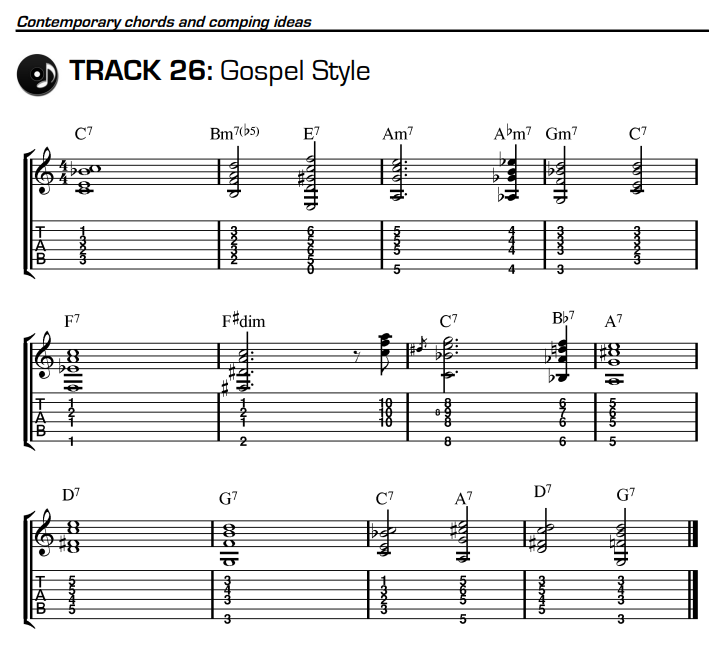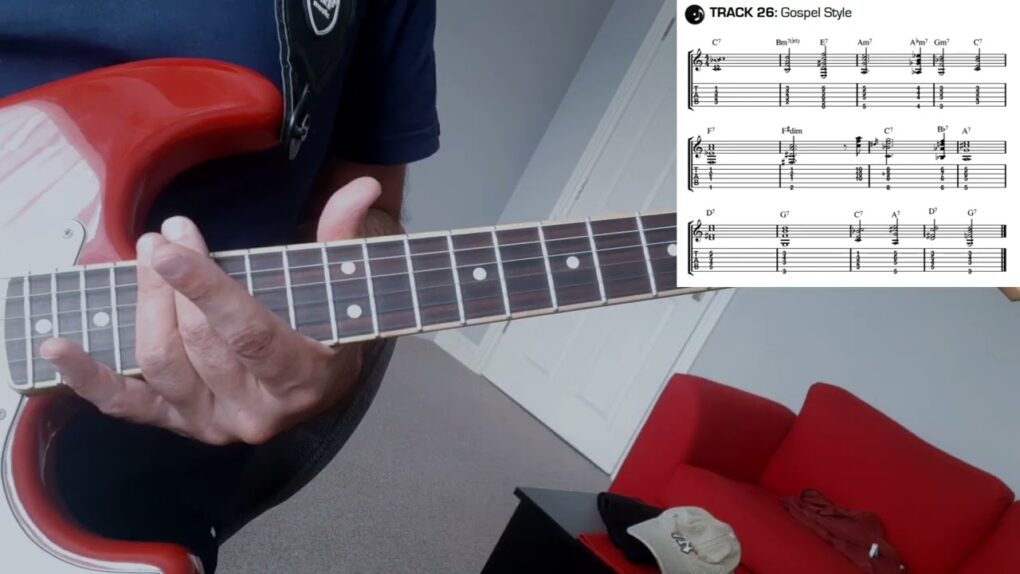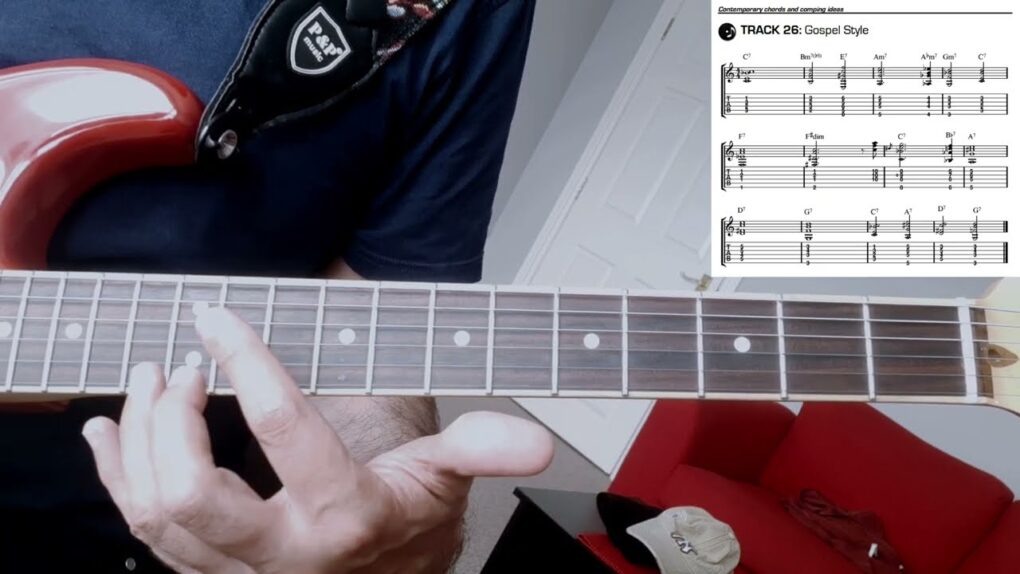In this video, I start by explaining that the chord progression is a 12-bar blues. The first step I suggest is finding the pentatonic scale that corresponds to the key, in this case, C minor pentatonic. By using my ears, I try to find notes within that scale that work well with the chords, even though there are some substitutions in the progression.

I play along with a backing track using a looper, sticking to the C minor pentatonic scale. Most of the notes work well, except for a section where there is a 2-5-1 progression in minor. I suggest that in that section, it might be better to play more sparingly and focus on the root notes.
I then discuss how to analyze the chord changes in more detail. For the C7 chord, I can play a blues lick. But for the Bm7-E7-Am7 progression, which is a 2-5-1 in A minor, I can choose between playing a jazz lick or shifting to the A minor pentatonic scale.
Next, I demonstrate the importance of spelling out the chords. For the Bm7♭5, E7, and Am7 chords, I show how to play the corresponding arpeggios or find phrases that fit those chords.
Moving on to the Gm7, C7, and F7 chords, which form a 2-5-1 progression in F major, I suggest playing the pentatonic scales but adding the ninth for more flavor. I also mention the option of learning phrases that fit the isolated dominant chords, such as D7 and G7.
In the last part of the video, I emphasize the use of diminished arpeggios for the diminished chord and explain how to connect phrases to the chord shapes. Finally, I touch upon playing a blues lick on the turnaround, ending on the G note.
Overall, this video serves as a practical guide for approaching chord changes in a blues progression. By focusing on the pentatonic scale, chord arpeggios, and connecting phrases, you can enhance your improvisation and better navigate through the changes.

